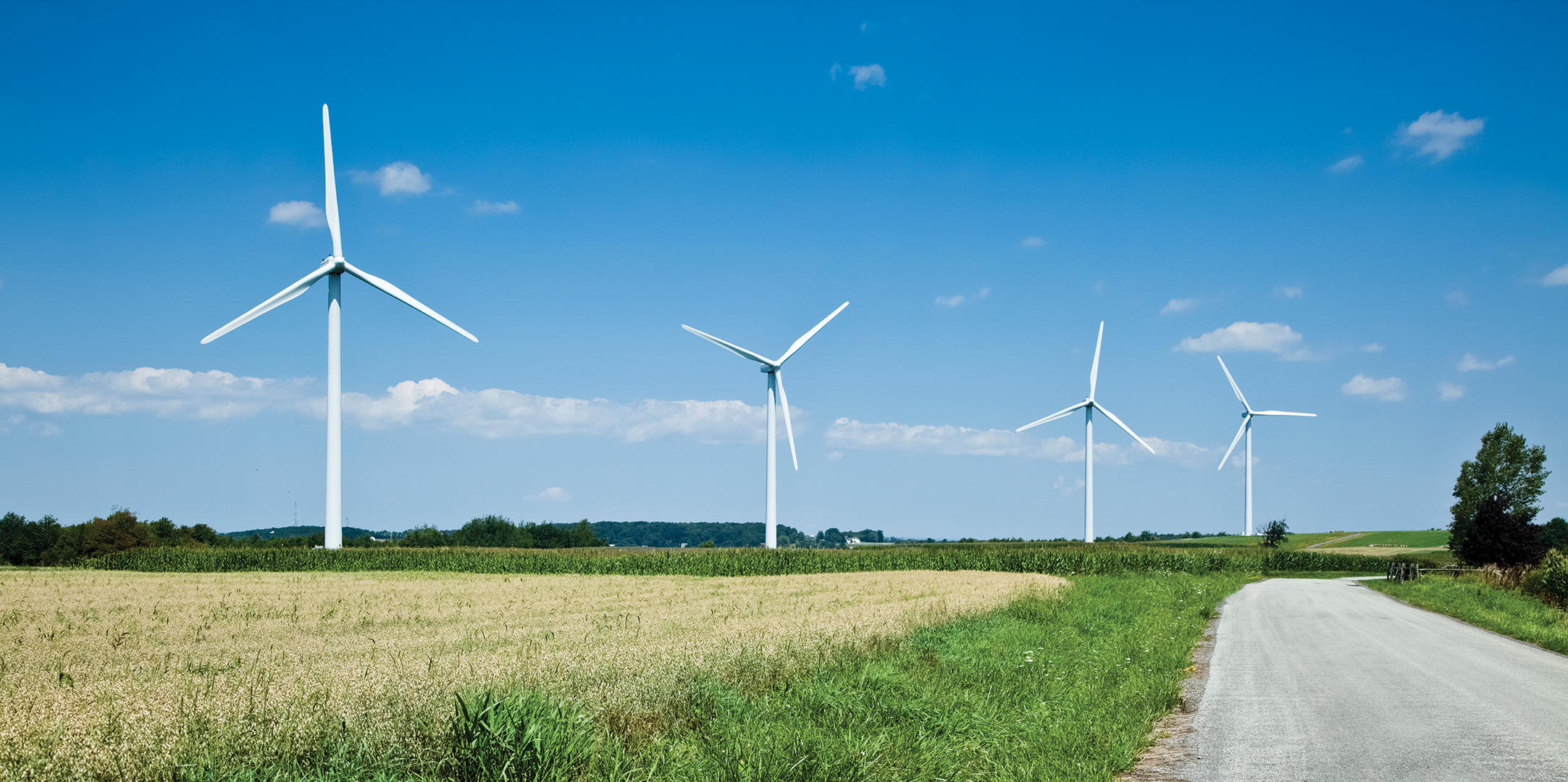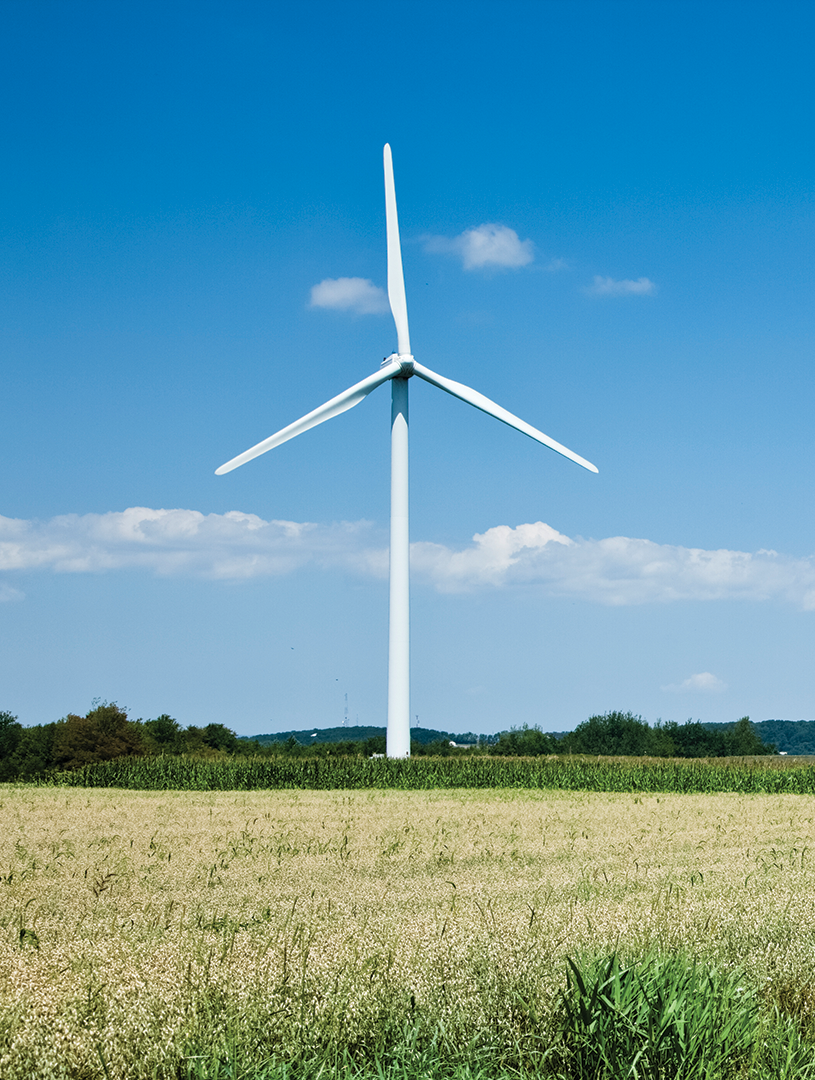The offers come with a knock on the front door, a white envelope in the mail or a greeting from a fresh-faced salesperson at the farmers market. “Make the switch to clean energy.” But the rates promised and the actual sources of the energy can be difficult for a consumer to understand. Enter PA Power Switch.
That’s the name of a website the Pennsylvania Public Utility Commission (PUC) launched in 2010 to allow consumers to choose an “energy supplier” for their home. Building on deregulatory legislation in the State House, the idea was to allow homeowners across the state to shop for their electricity supplier rather than simply accept the standard product from their default transmission company (PPL in the west, PECO in Philadelphia).
PA Power Switch enables consumers to filter their choices by a number of variables, including whether or not a supplier uses renewable energy.
But the number of choices can be overwhelming. As of April 2025, Philadelphia residents were presented offerings from a whopping 56 companies, with an overwhelming alphabet soup of names, from AEP Energy to WGL Energy Services. Naturally, the first instinct — as with any shopping excursion — is to sort by price. But on PA Power Switch, that gives rise to a new conundrum.
On the most expensive end of the spectrum, 100% renewable energy products cost more than double PECO’s standard price. That would add about $114 a month in electricity costs for the average Pennsylvania homeowner.
Then there are companies advertising renewable energy for less than one-third of the price of their more expensive competitors. Their cheapest options actually cost 25% less than PECO’s market standard rate. That’s a very enticing offer.
But how can renewable energy cost less than the primarily fossil fuel-derived standard mix from PECO? And why is one renewable energy option so much less than another?
As Elizabeth Marx, executive director of the Pennsylvania Utility Law Project (PULP), would later tell me: “We advise people that if the offer seems too good to be true, it is.”

Unwieldy energy
Companies supplying electricity to consumers via PA Power Switch generally aren’t the ones who make it. Instead, generators — think wind farms or conventional power plants — feed electricity into the regional grid from which users then draw it to power their homes and businesses. Suppliers function as middlemen, helping users connect to the grid and pay for the electricity they take from it.
Electricity from all generators feed the same transmission lines, so even if you’re signed up for a “100% renewable” product, your energy — like everyone’s — is mixed.
Renewable energy is instead tracked through something called a Renewable Energy Certificate, or REC, issued to a generator for creating a unit of electricity, typically one megawatt-hour. That’s the amount of electricity the average Pennsylvania household uses in about five weeks.
Renewable energy suppliers ostensibly commit to buying enough RECs to cover your energy use. In theory, it works. But in practice, it gets very messy, says Jenya Kahn-Lang, an economist and a fellow at Resources for the Future, a Washington, D.C.-based think tank.
“There is really poor transparency” in REC marketplaces, Kahn-Lang says.
Not all RECs are the same, largely due to geography. For example, Pennsylvania is rich in natural gas and nuclear power. The sun doesn’t shine as brightly as often as it does in, say, California, where the solar industry is booming, nor does the wind blow as freely as it does in Texas. So it’s harder for a wind or solar farm in Pennsylvania to make ends meet, and so a REC from Pennsylvania costs more.
Why would anyone want to buy a more expensive REC? Experts say it’s for many of the same reasons someone would buy something local: to grow the renewable economy and jobs in Pennsylvania, fueling a statewide energy transition. Consumers can theoretically benefit from a reduction in local air pollution from fossil fuel combustion.
But there are other reasons for the cost differential in RECs, and they get shadier. RECs come with vintage years, just like wine. But in this case, newer is better. A REC is created along with the corresponding megawatt-hour of energy, so buying an old REC — for energy generated in 2015, say — does less to support the generation of new renewables.
RECs can also be bought and resold, passed around in nationwide marketplaces. That opens the door for them to get double counted, for two or more entities to end up claiming the benefits of the same electricity at different times. Kahn-Lang offers an example where a Texas wind plant produces energy that they sell to a large company, who puts out a press release touting their investment. But the utility also sells a REC out of state to a Pennsylvania-based supplier. Now two different entities are claiming the benefits.
“There are a lot of concerns about what we call additionality…or double counting,” Kahn-Lang says.
Or, perhaps the wind farm in Texas was only built by an energy company to meet in-state regulations. While selling RECs may help recoup costs, whether or not they’re purchased may have little to no impact on whether the company decides to build more windmills.
It’s a space so confusing that even the experts are still working on demystifying it. But there’s enough known unknowns that some companies are building a brand around eliminating uncertainty for consumers. In the Philadelphia market, the Energy Co-op, a nonprofit cooperative supplier of energy, says it only purchases RECs created in the past two years, to cut down on any potential tomfoolery and signal legitimacy to consumers. The company also “retires” each REC they purchase to make sure they cannot be claimed by another party.
“The Energy Co-op matches 100% of our members’ usage with high-quality renewables, wind and solar,” says Divya Desai, executive director of the co-op.

Electric regulator
At this point, you may be thinking, where are the regulators? If you have a stick handy, get ready to shake it.
Across the country, there are no fewer than 10 independent entities responsible for administering registries for RECs issued across state lines. In our region, that’s PJM Interconnection, the company that handles electricity transmission across much of the Mid-Atlantic. But each state can also set up its own REC marketplaces, typically used to ensure that energy producers in the state are meeting a minimum standard for renewable energy.
Then there are adjacent entities, like the PUC, which doesn’t have a direct role in verifying RECs but does have a responsibility to consider consumers’ needs, such as through PA Power Switch.
Marx is critical of the PUC. She says recent analysis of marketplace data by her organization found that, over the past 10 years, Pennsylvania energy consumers who switched suppliers wound up paying billions of dollars more for energy than if they had just stayed with the standard mix. And the extra costs appear to be borne disproportionately by low-income individuals.
A chief concern is predatory tactics used by companies who approach people at mall kiosks or go door-to-door, often with gift cards in hand, looking to lock customers into a contract with swiftly escalating rates.
Marx says it’s difficult to discern exactly what’s going on. A chief concern is predatory tactics used by companies who approach people at mall kiosks or go door-to-door, often with gift cards in hand, looking to lock customers into a contract with swiftly escalating rates.
But she’s also concerned about a lack of transparency for those using PA Power Switch. The tool does have filters that purport to remove suppliers who are only offering introductory rates or add ones that offer fixed prices. But Marx says it’s not enough. The fixed rate option, for example, applies to suppliers whose advertised rate is good for as little as three months.
“There are an awful lot of ways to bake fees in,” she adds.
The renewable energy filter also leaves much to be desired, as it doesn’t differentiate between what kind of RECs a company purchases. A prior option to view only Pennsylvania-based wind and solar was also removed from the website several years ago. Marx says she doesn’t believe the site as it’s currently set up will help drive renewable growth in the state as many had hoped.
“It’s really scary when you start to look at how much we have paid and whether or not that investment in competitive shopping is paying off in terms of what was promised, which is an increase in the presence of renewables in our state.That’s a big question that I don’t think we’ve been asking enough yet,” Marx says.
Nils Hagen-Frederiksen, press secretary for the PUC, pushes back on these criticisms. He says electricity suppliers on PA Power Switch are “required to disclose” all terms and fees to customers, who also receive contract summaries and two separate notifications prior to the end of any fixed-rate term. He notes that the commission does not set pricing for products and instead focuses on “clear and accurate disclosure.” The option to filter out everything but Pennsylvania-sourced renewables was removed, he adds, because it sometimes yielded zero results.
“This change improves visibility and makes it easier to compare offers side by side,” Hagen-Frederiksen wrote in an email. “For consumers looking for more specific sourcing details, we encourage them to check supplier websites or contact the supplier.”
Asked about PULP’s findings indicating that deregulating the marketplace may be costing consumers billions more for electricity in aggregate, Hagen-Frederiksen said the PUC “can’t speak to the methodology or assumptions behind third-party studies.” He said that any consumer who felt they had been misled by a supplier should contact the commission. “We take those concerns seriously and have an established complaint and enforcement process to investigate and address those issues.”
Exercising your power
Marx says it’s important for customers to do their homework. Crucial details to evaluate are how long an introductory rate is fixed for and what happens when that period expires. Potentially, information about what kind of RECs a supplier purchases may be included up front, but if not, Desai says shoppers should simply call the supplier and ask.
If a supplier is not transparent about the quality of the product, you probably are not getting what you think you are.”
— Divya Desai, Energy Co-op
“If a supplier is not transparent or up front about the quality of the product, you probably are not getting what you think you are,” Desai says, adding that the Energy Co-op tries to address the trust issue by regularly communicating with their members and providing educational materials.
But for Kahn-Lang, asking the average consumer to personally vet energy suppliers feels like an unreasonable proposition. For her doctoral dissertation, Kahn-Lang studied whether educating consumers actually helped them make good choices in selecting an energy supplier.
“It didn’t find much effect of education,” she says.
Marx agrees that the marketplace is simply too complex, with too many actors and variables, to leave it to the consumer to ensure they’re getting a fair price on RECs that truly drive the growth of new sustainable energy. She wants regulators to step up and do a better job for consumers.
“We need some real fundamental changes. I think it goes beyond marketing. There need to be some stronger restrictions on what and how energy is sold,” Marx says. “And we should probably even have a much larger policy debate [about] whether there is a better approach [than PA Power Switch] to make energy affordable.”










Good article that touches on a lot of the difficult issues around purchasing clean power, especially in PA. One key concept, “additionality,” is only briefly touched on, and I think deceptively. Additionality refers to the actual change in dispatched renewable power from the purchase of RECs-backed electricity – is it one MWh for every REC (almost always not), one for every ten … or even a hundred? In other words, how much impact is truly imparted from your “green” power? If it’s negligible, then the whole transaction offers nothing but greenwashing. This is the issue that has driven many large entities to actually go contract directly for green power plants. But the “double counting” quote from Jenya Kahn-Lang makes it sound like providers’ (and some buyers’) skulduggery (a problem that is largely addressed by RECs certifications like Green-e) is the central problem. I think it would make for a great sequel if Grid took on this complex issue in a future edition.